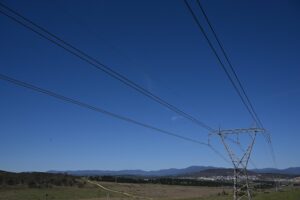
Recently the electric car maker Tesla rocked the electricity world by launching with their low-cost Powerwall battery into the electricity distribution grid, business, and home electricity market sectors.
The announced price tag of $US 3,000 for Tesla’s seven kilowatt-hour system (or ~ $US 400 / kilowatt-hour, which does not include installation and inverter costs) illustrates how electrical battery costs continue to fall. No doubt storing electricity right in your garage will be useful and may become quite popular.
But as we and others have written, having large-scale pumped hydro energy storage (PHES) on the electricity grid can also be a useful thing especially as the penetration of renewable energy grows.
Our research described PHES costs in the range of $A 100 to 200 per kilowatt-hour (installed), far cheaper than the Tesla announcement. It is not too late for those in the business of large-scale electricity supply to get busy devising PHES schemes that slow their customers’ rush down to the Tesla Powerwall store.
And some developers are doing just that. With PHES, two things on which you must spend money are two holes in the ground – the upper and lower ponds. Although these holes needn’t be large – because ponds as small as five hectares can store a meaningful amount of energy – digging holes comes at a cost.
So it makes sense that today’s Australian PHES developers look around for where there might be at least one existing body of water or hole in the ground. Some of our previous research describes how even the ocean can be used as the lower pond. Other options include existing water storage reservoirs and disused mines.
Overseas, underground mines are being considered for PHES. However, surface or open-cut mines are also suitable. In Australia , Leyshon Resources and Genex Power are targeting two different Queensland mine sites where existing open-cut mines or ponds might be converted to PHES service. These mines are located toward the fringe of the electricity grid and planned capacities range from 20 to 330 megawatts.

Rather than at the fringe of the grid, one option for Victoria would be sited right in the heart of that state’s traditional electricity generation region. Latrobe Valley open-cut brown coal pits could be converted to PHES service as those pits reach their use-by dates.
Many Australians know that Lake Eyre in central Australia, at 12 metres below sea level, is Australia’s lowest naturally-occurring location. However some of the Victorian brown coal mines have been dug as deep as 60 meters below sea level to form the deepest open-air point in Victoria and possibly on the entire continent.
These below-sea-level mine pits would serve as the lower ponds for a PHES scheme. Existing cooling water pondages or new reservoirs would be used as upper ponds. Unlike the Queensland projects mentioned above, a Latrobe Valley PHES facility would have the competitive advantage of being sited nearly beneath the major electricity transmission lines that supply the Melbourne market.
The areal extent of the Latrobe Valley pits (hundreds of hectares) plus the 130 meter elevation difference between the upper and lower ponds allow a world-class PHES facility greater than 1,000 megawatts to be contemplated. Such a PHES facility would, in future, help balance the continuing expansion of variable renewable electricity generation (i.e. wind and solar).
Presently, as shown in the chart below, wholesale electricity price volatility has slumped, taking with it any immediate incentives to build large-scale energy storage. This is because of declining demand for grid-supplied electricity, the roll-out of rooftop solar PV, excess generation capacity, cooler summers, recent rainfall filling conventional hydro dams, and other factors.

However electricity wholesale market price volatility and incentives for PHES will return as ageing coal plants in the Latrobe Valley and elsewhere are retired, renewable electricity generation (wind and solar) expand, and when hot and dry weather returns.
Retiring Latrobe Valley brown coal plants and rehabilitating their associated coal pits for a future career in renewable energy storage could be key stepping stones on the path to 100% renewable energy.
Tim Forcey is Energy Advisor, University of Melbourne Energy Institute, and Roger Dargaville is Deputy Director, University of Melbourne Energy Institute








